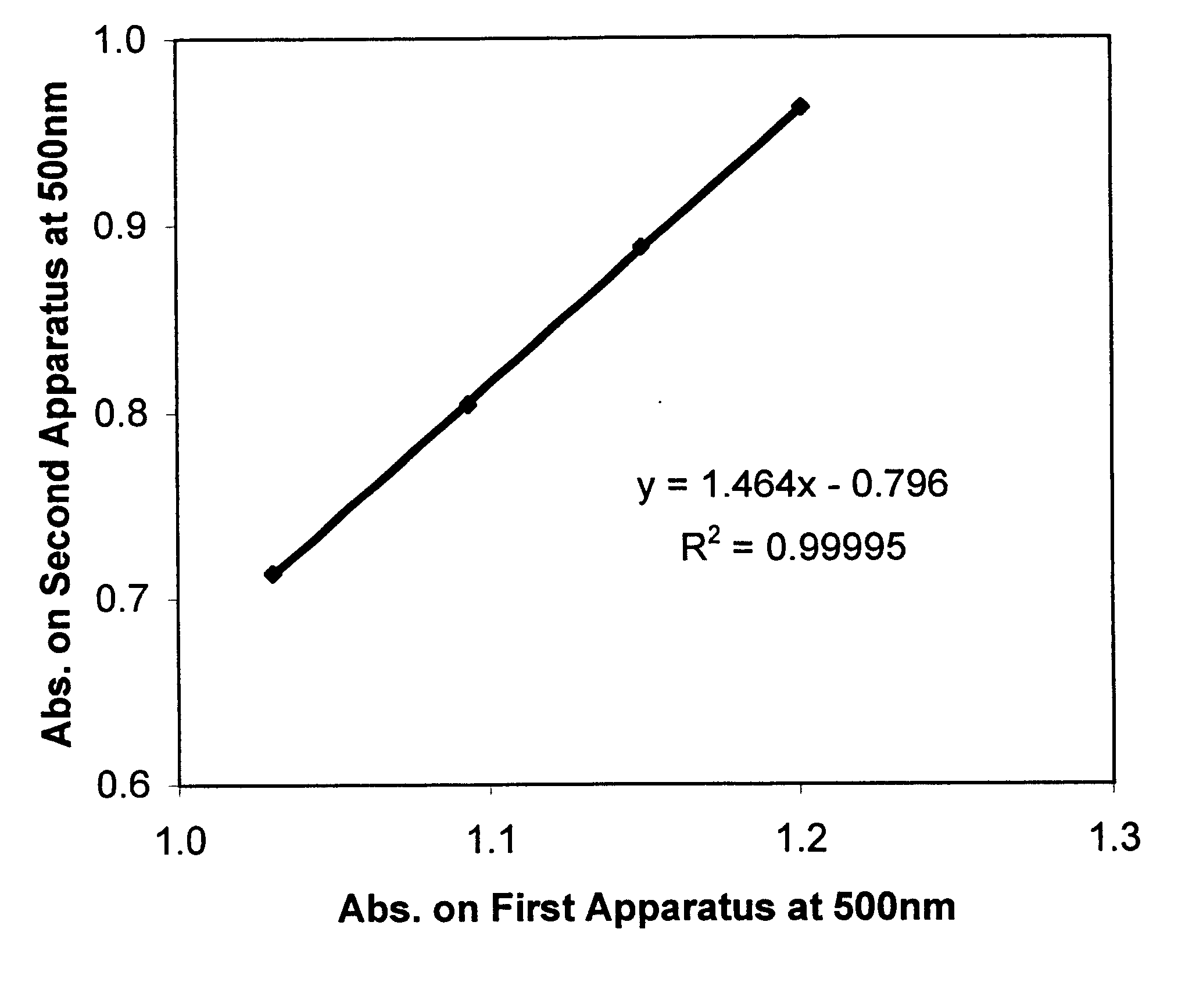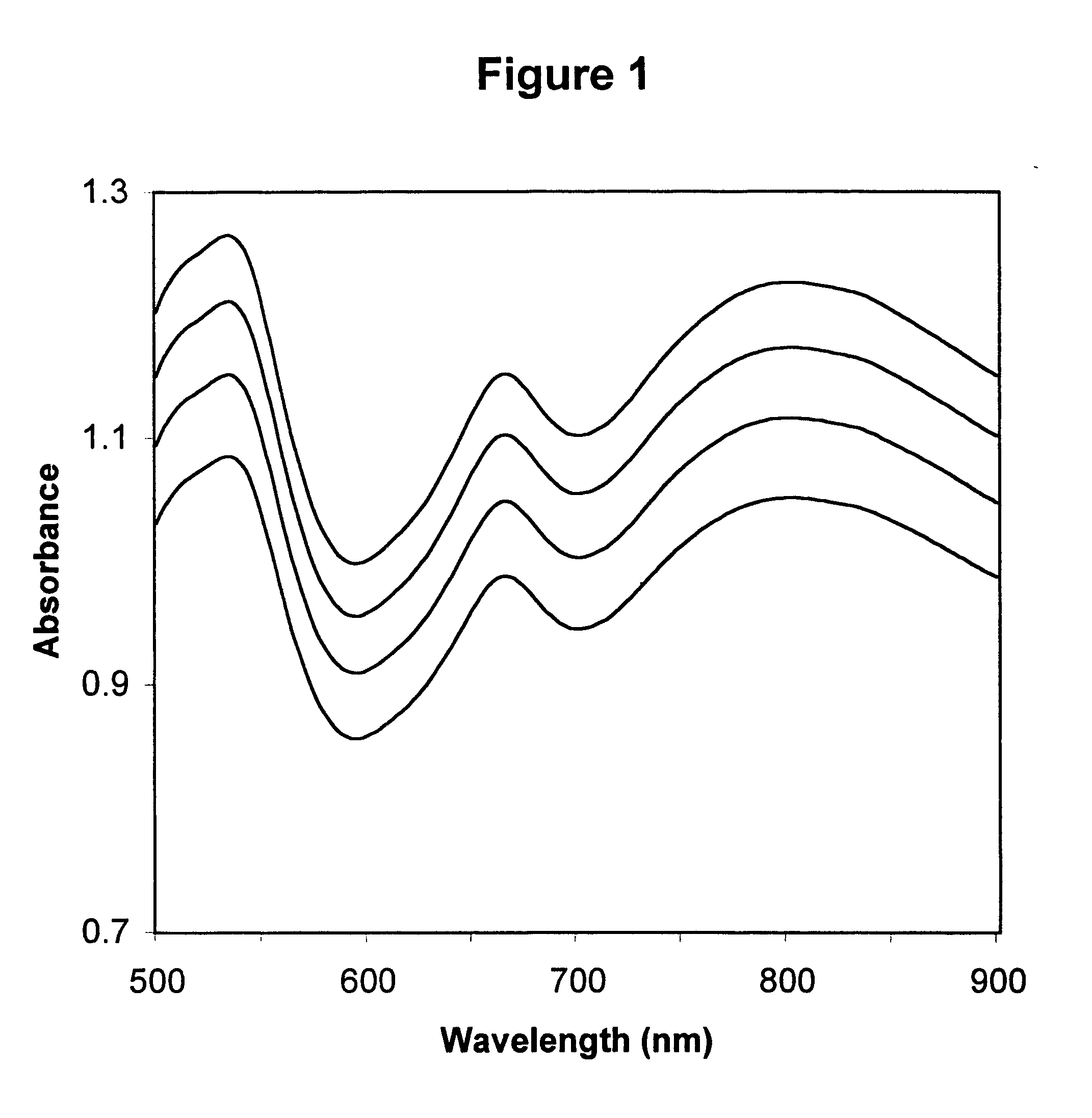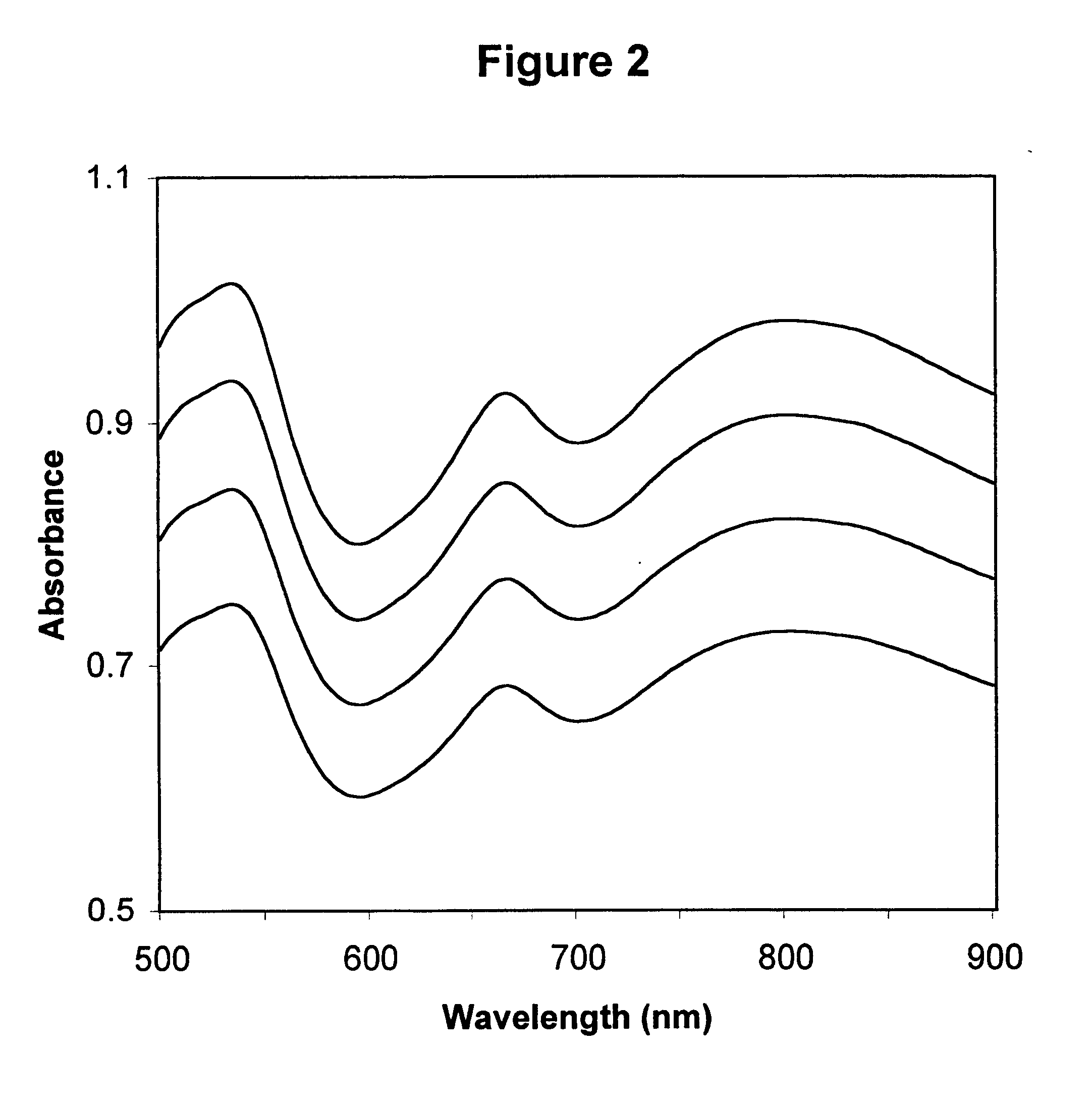Method for calibrating spectrophotometric apparatus with synthetic fluids to measure plasma and serum analytes
a spectrophotometric and synthetic fluid technology, applied in the direction of liquid/fluent solid measurement, instruments, chemical methods analysis, etc., can solve the problems of cumbersome time-intensive exercise, compromise specimen integrity, and the life of the apparatus can amount to a considerable amount of time and cos
- Summary
- Abstract
- Description
- Claims
- Application Information
AI Technical Summary
Benefits of technology
Problems solved by technology
Method used
Image
Examples
examples
The absorbance spectra of four calibrators when tested on a "First Apparatus" are shown in FIG. 1; the absorbance spectra obtained from a "Second Apparatus" are shown in FIG. 2. The linear regression plots and equations for 500 nm, 550 nm, 600 nm, 650 nm, 700 nm and 750 nm are shown in FIGS. 3, 4, 5, 6, 7, and 8 respectively. Table 1 shows the y-intercepts and slopes for the wavelengths chosen as examples.
The slopes are very similar for the wavelength example shown in Table 1, but there are more significant differences for the y-intercepts. Theses numbers are very different from apparatus to apparatus. The large R.sup.2 values (very close to 1) indicates the high correlation between the absorbances of the two apparatuses, and hence the reliability of the absorbance (or photometric) corrections--which is the basis for the recalibration process.
The y-intercepts and slopes in Table 1 were derived from the linear regression plots of absorbances for the calibrators obtained on the First ...
PUM
| Property | Measurement | Unit |
|---|---|---|
| concentration | aaaaa | aaaaa |
| concentrations | aaaaa | aaaaa |
| wavelength range | aaaaa | aaaaa |
Abstract
Description
Claims
Application Information
 Login to View More
Login to View More - R&D
- Intellectual Property
- Life Sciences
- Materials
- Tech Scout
- Unparalleled Data Quality
- Higher Quality Content
- 60% Fewer Hallucinations
Browse by: Latest US Patents, China's latest patents, Technical Efficacy Thesaurus, Application Domain, Technology Topic, Popular Technical Reports.
© 2025 PatSnap. All rights reserved.Legal|Privacy policy|Modern Slavery Act Transparency Statement|Sitemap|About US| Contact US: help@patsnap.com



